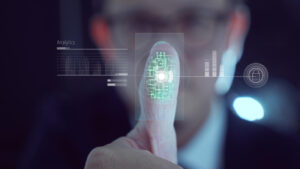In the digital age, where financial transactions occur at the click of a button, ensuring the security of banking systems is paramount stated by Bahaa Abdul Hadi. One innovative approach that has gained traction in recent years is biometric fusion. This method combines multiple biometric modalities to enhance security measures and prevent fraudulent activities effectively.
The Need for Enhanced Security in Banking
With the proliferation of cyber threats, traditional security measures such as passwords and PINs have become increasingly vulnerable to exploitation. Hackers employ sophisticated techniques to bypass these defenses, resulting in significant financial losses for both institutions and customers. Biometric fusion offers a robust solution by leveraging multiple biometric identifiers, making it exponentially harder for fraudsters to infiltrate banking systems.
Understanding Biometric Fusion
Biometric Fusion involves the integration of various biometric modalities such as fingerprint, iris scan, and facial recognition to authenticate users’ identities. Unlike single biometric systems, which are susceptible to spoofing and false positives, biometric fusion provides a more reliable and secure means of identification. By combining multiple biometric traits, the system achieves a higher level of accuracy and resilience against fraudulent attempts.
Implementation of Biometric Fusion in Banking
Integrating biometric fusion into banking systems requires careful planning and execution. It involves seamlessly incorporating the technology into existing security infrastructure while ensuring minimal disruption to the user experience. Banks must strike a balance between security and convenience to encourage widespread adoption among customers.
Challenges and Solutions
Despite its effectiveness, biometric fusion is not without its challenges. Privacy concerns regarding the collection and storage of biometric data remain a significant hurdle. Additionally, technological limitations such as sensor accuracy and processing speed pose obstacles to widespread implementation. However, ongoing research and development efforts aim to address these issues and further enhance the capabilities of biometric fusion technology.
Conclusion
Biometric fusion stands as a beacon of hope in the ongoing battle against financial fraud in banking. Its multifaceted approach to authentication provides a formidable defense against the increasingly sophisticated tactics employed by cybercriminals. By harnessing the power of various biometric modalities, institutions can fortify their security measures and instill confidence in their customers.
Looking ahead, the future of biometric fusion in banking appears promising.
As advancements in technology continue to push the boundaries of what is possible, we can anticipate even greater levels of accuracy, reliability, and accessibility. Plus, as regulatory frameworks evolve to address privacy concerns and standardize implementation practices, biometric fusion is poised to become a cornerstone of banking security worldwide.
However, the journey toward widespread adoption is not without its challenges. Banks must navigate the delicate balance between security and convenience, ensuring that robust authentication measures do not impede the user experience. Additionally, ongoing research and development efforts must address technological limitations and address emerging threats to stay one step ahead of adversaries.
In essence, biometric fusion represents a transformative force in the realm of banking security, offering a potent defense against fraudsters while empowering customers with peace of mind. As we embrace this cutting-edge technology, we embark on a path toward a safer, more secure financial landscape for all.
The article has been written by Bahaa Abdul Hadi and has been published by the editorial board of www.identityherald.com



